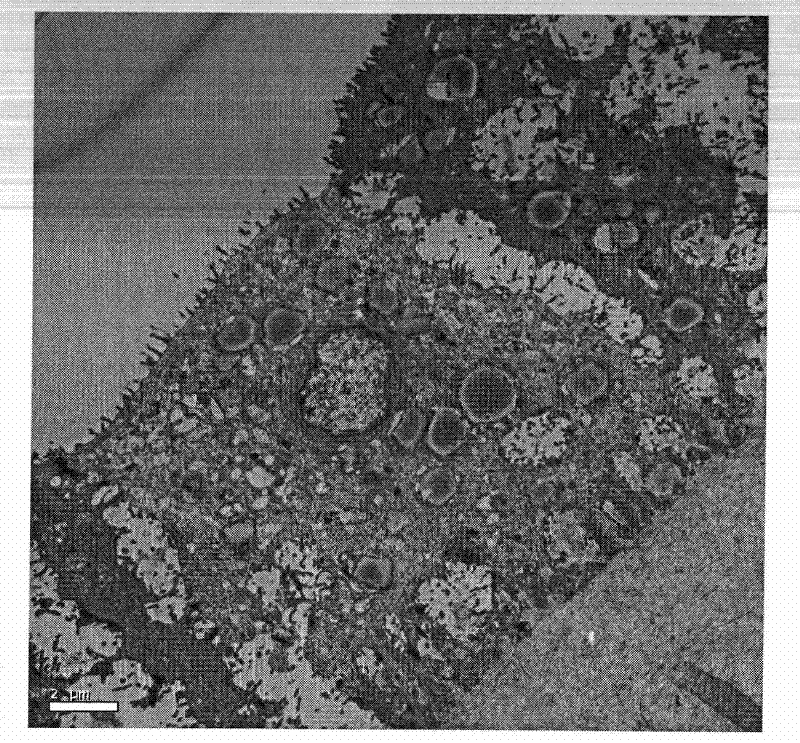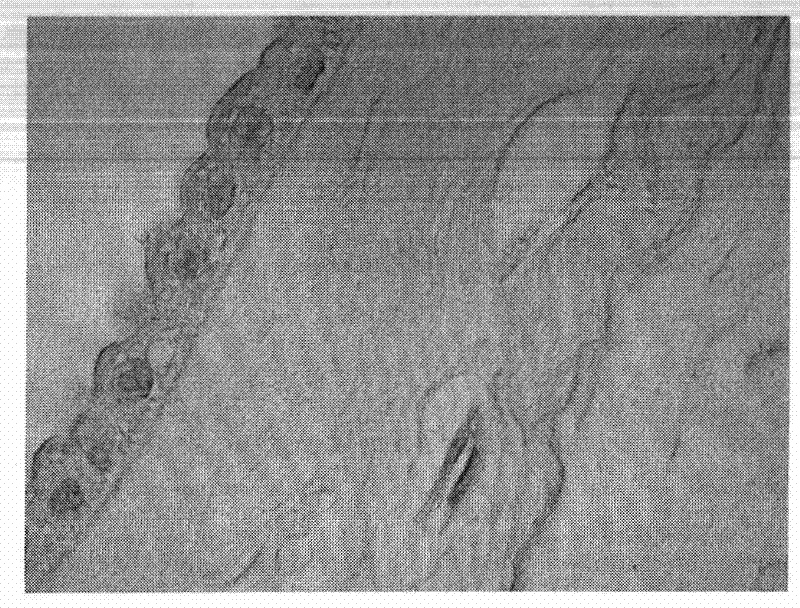Method for extracting unsaturated fatty acid composition from humen amniotic epithelial cells, and application thereof
A technology for unsaturated fatty acids and epithelial cells, which is applied in the field of extracting unsaturated fatty acid compositions in free state, can solve the problems that the output of PUFAs cannot meet the needs of human beings, there is no data showing the function of human amniotic membrane epithelial cells, and the price is expensive. Reasonable, broad medicinal prospect, low cost effect
- Summary
- Abstract
- Description
- Claims
- Application Information
AI Technical Summary
Problems solved by technology
Method used
Image
Examples
Embodiment 1
[0036] Example 1: Morphological Observation and Lipid Staining of Amniotic Epithelial Cells of Normal Full-term Cesarean Section
[0037] The amniotic membrane was taken from a normal full-term cesarean section, fixed in 10% formaldehyde solution for 24 hours, rinsed in running water, dehydrated in gradient alcohol, transparent in xylene, embedded in wax. Slice with a LEICA microtome with a thickness of 7 μm. After spreading in warm water at 45°C, pick up the slides with poly-lysine-coated glass slides. Let dry and set aside.
[0038] Paraffin sections were routinely dewaxed to water. After washing with distilled water, dip in hematoxylin and lightly dye for 1-2 minutes, then wash with tap water. Inject 70% alcohol for 5 seconds. Into Sudan III staining solution for 30 minutes. Wash with 70% alcohol for 5-10 seconds. Wash with distilled water, and cover with glycerin gelatin.
[0039] After the sections were stained in Nile blue sulfate solution for 30 minutes, they wer...
Embodiment 2
[0043] Example 2: Acquisition, isolation, cultivation and identification of human amniotic epithelial cells
[0044] The amniotic membrane was torn off from the placenta discarded after cesarean section, and placed in 1×PBS containing penicillin and streptomycin double antibodies and washed repeatedly until there was no blood. Spread the epithelium face down in a culture dish, and use a cell scraper to remove the connective tissue under the amnion dense layer. After repeated washing in 1×PBS, the amniotic membrane was cut into small pieces of about 1mm×1mm with ophthalmic scissors, added with newly prepared 0.01% collagenase IV, and placed in a 37°C incubator for 2-3 hours to digest. Collect the liquid in a centrifuge tube, centrifuge at 1000 rpm for 5 minutes, and discard the supernatant. Rinse once with 1×PBS. Add 0.25% trypsin to digest at room temperature for 0.5-1 hour. Serum-containing medium terminates the digestion. Centrifuge at 1000 rpm for 5 minutes and discard ...
Embodiment 3
[0048] Example 3: Detection of the type and content of unsaturated fatty acids in free state extracted from human amniotic epithelial cells by gas chromatography / mass spectrometry
[0049] In order to reduce the interference of non-free fatty acids during the experiment, the cells were broken using a low-temperature ultra-high pressure continuous flow cell breaker, and 1×PBS 25ml was added to each 1.8L cell sample for dilution and washing. The whole process of breaking was in a low-temperature water bath at 4°C-6°C To maintain the activity and performance of the original substances in the cells. Add 75 ml of n-hexane to the crushed sample, and vibrate with an oscillator at 500 rpm for 12 hours. After 25 ml of the organic phase was dried by nitrogen blowing, the dried fatty acid was derivatized with boron trifluoride methanol solution. After adding 10ml of n-heptane for extraction, take 5ml of it and dry it with nitrogen. Use 1ml of n-hexane to reconstitute and measure on the...
PUM
 Login to View More
Login to View More Abstract
Description
Claims
Application Information
 Login to View More
Login to View More - R&D
- Intellectual Property
- Life Sciences
- Materials
- Tech Scout
- Unparalleled Data Quality
- Higher Quality Content
- 60% Fewer Hallucinations
Browse by: Latest US Patents, China's latest patents, Technical Efficacy Thesaurus, Application Domain, Technology Topic, Popular Technical Reports.
© 2025 PatSnap. All rights reserved.Legal|Privacy policy|Modern Slavery Act Transparency Statement|Sitemap|About US| Contact US: help@patsnap.com



